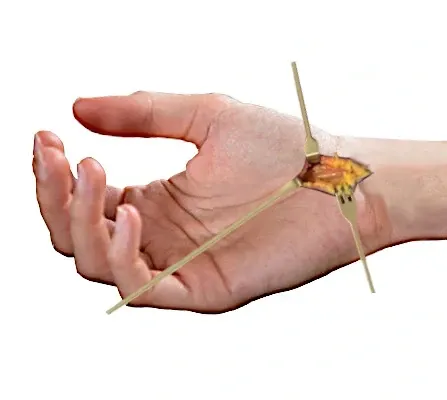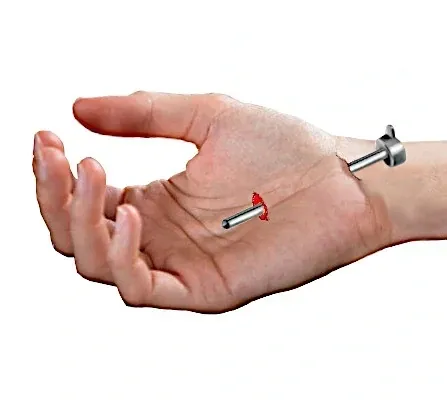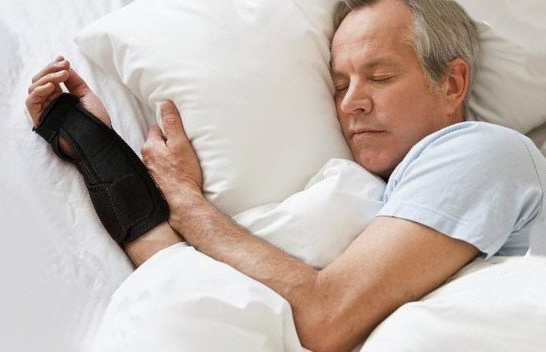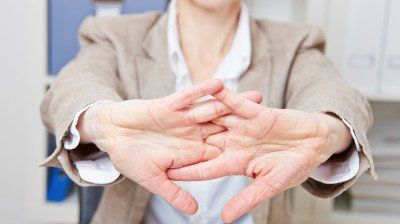- Steroid shots have a success rate of 45%.
- Some patients feel relief within a day while others require 1-2 weeks (or more) for relief.
- If the injection works, relief can last 4-6 months.
- More than 50% of patients will have symptoms return within 6 months.
- Over 75% of injected patients will elect to have surgery within one year.
Treatment: Carpal Tunnel Syndrome
From Dr. Z - Carpal tunnel syndrome specialist
Treatment: Carpal Tunnel Syndrome
Imagine getting rid of the crushing numbness and pain of carpal tunnel syndrome forever. You can! In fact, you have several choices for its treatment. Carpal tunnel syndrome can be eliminated completely so it never bothers you again using the remedies below.
Will you beat the odds?
About 46% of the time, mild stage (less than 6 months old) carpal tunnel syndrome will disappear by itself, without treatment. That percentage is much lower for moderate or severe stage patients.
Don't take any chances. If your symptoms worsen, your life will be many times more miserable.
FACT: Doctors diagnose over 8 million people a year with carpal tunnel syndrome. About 260,000 of them decide to treat it with surgery. The remainder (7.4 million) use non-surgical remedies.
While most patients choose non-surgical remedies, they must be used diligently and properly in order to permanently eliminate carpal tunnel symptoms.
This article details the Surgical and Non-Surgical treatments available. You'll learn the pros and cons of each treatment, and which ones doctors and patents recommend most often.
Non-surgical carpal tunnel treatments
Doctors usually prescribe one or more non-surgical methods to relieve carpal tunnel syndrome. In fact, the American Academy of Orthopedic Surgeons (those who regulate hand surgery) actually recommend patients use one (or more) of the following 6 remedies before considering surgery. Why? Because they work for most carpal tunnel sufferers.
The non-surgical remedies described below are the most common ones recommended by doctors, physiotherapists, and chiropractors. If your carpal tunnel symptoms are mild, any one of these remedies will usually provide good results. If your symptoms are severe, you may need two or more of them at the same time.
1. Steroid injections
2. Night bracing
3. Myofascial release massage
4. Stretching exercises
5. Yoga
6. Pain medicines
Surgery for carpal tunnel syndrome
Doctors diagnose over 8 million people a year with carpal tunnel syndrome. And about 500,000 of them decide to treat it with surgery. The remainder use non-surgical remedies.
The technical term for this hand operation is "carpal tunnel release surgery". It's specifically designed for relieving symptoms of carpal tunnel syndrome.
Doctors perform the surgery in one of two ways: open or endoscopic. You will have one of these procedures, depending on which one your doctor is comfortable and experienced with.
Both of these surgical techniques have a success rate of about 50%. This is based on patient satisfaction at 6 months. The primary reasons for dissatisfaction (including patient complaints) are:
- Persistent pain
- Symptoms didn't resolve
- Symptoms returned
- Poor hand function & weakness
What to expect during carpal tunnel surgery
Both operative procedures are generally performed on an outpatient basis.
For the open technique, you're usually given an intravenous general anesthesia which puts you to sleep. For the open technique, you're generally given a nerve block in the arm which deadens your hand while you remain awake.
The doctor then makes the incision in your hand.
- For open surgery, you'll have a 2-3" long incision from your wrist to your palm.
- For endoscopic surgery, you'll have either one or two small holes in your hand.
The incisions allow the doctor to see the transverse carpal ligament. This ligament is a band of tough tissue connecting both sides of your hand. The doctor uses a scalpel to cut the ligament. When cut, the ligament lets your wrist bones snap apart. This relieves pressure on the median nerve directly beneath it.
Open carpal tunnel surgery takes 40--20-30 minutes. Endoscopic surgery takes 40-60 minutes. Once the operation is complete, the staff wraps bandages around your hand. When you're fully awake (1-2 hours later) you're sent home to recover.
The surgical staff will give you special written instructions to follow at home.
Comparison of carpal tunnel surgery techniques
Open carpal
tunnel surgery

- Requires 2-3" long incision.
- More than half the rate of accidental damage to a nerve, blood vessel or tendon.
- Six times fewer cases of median nerve damage.
- Scars are larger and more sensitive.
- About 32% less expensive.
- More post-surgical pain and longer recovery time.
- Requires more extensive
aftercare.
Endoscopic carpal
tunnel surgery

- Requires one or two small holes.
- More than half the rate of complications.
- Faster full recovery (weeks vs months)
- Better overall recovery of function.
- Faster return to work (1-2 weeks vs 4-6 weeks)
- Results in smaller, less sensitive scar(s).
- More expensive.
- Performed by only 20% of hand surgeons.
Summary
Choose the right treatment! Carpal tunnel syndrome CAN be eliminated -- provided you use the proper treatment at the right time. Surgery is one option, and it can be done in one of two ways: open or endoscopic. But most patients choose to use one or more non-surgical remedies first. That's because they work extremely well for most patients. The most common non-surgical remedies are steroid injections, night bracing, myofascial release massage, stretching exercises, yoga, and pain medicines.










